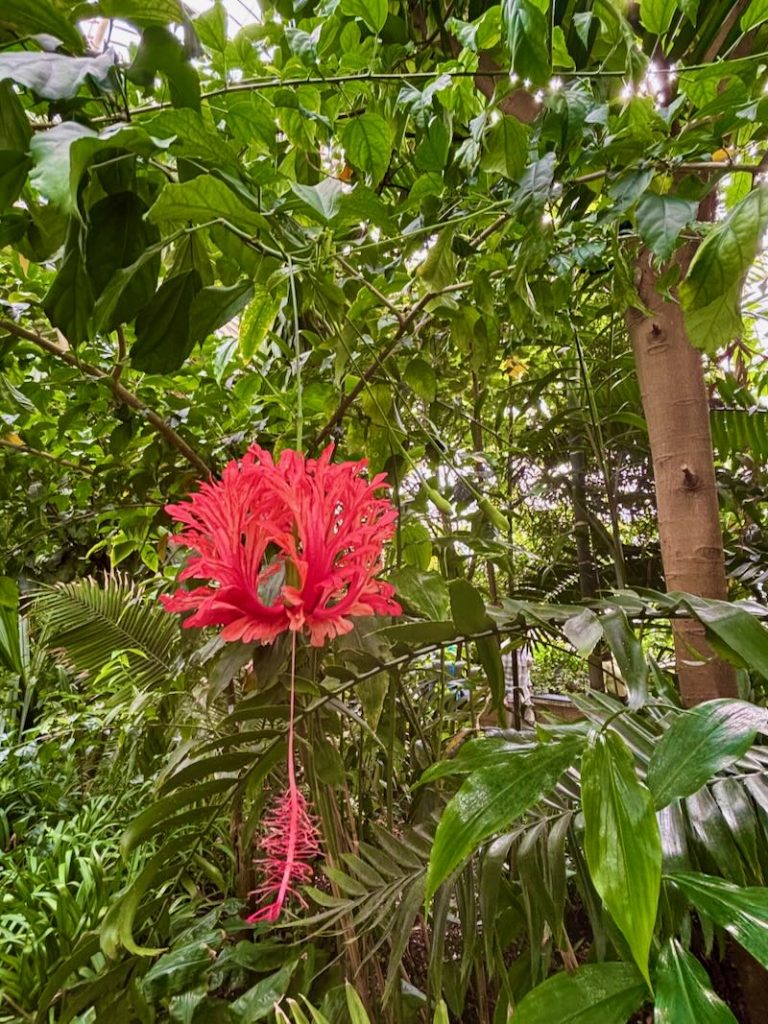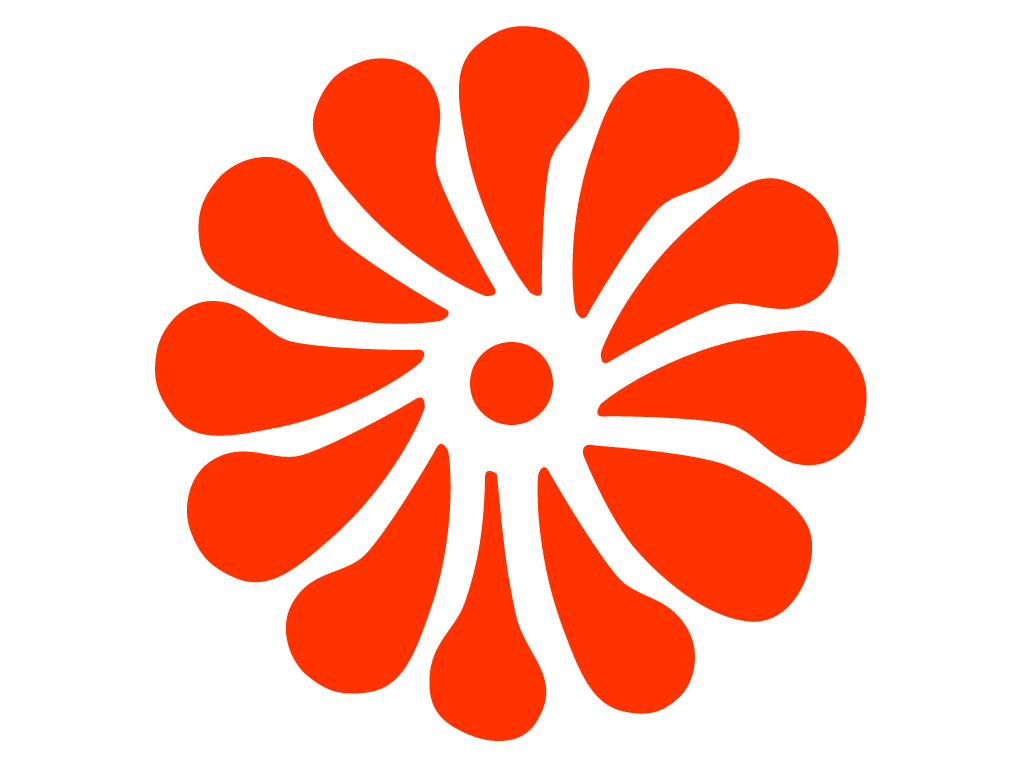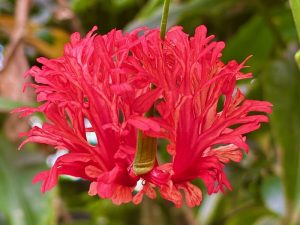Hibiscus schizopetalus: The Coral Hibiscus with Fringed Beauty
Hibiscus schizopetalus is one of the most enchanting flowering shrubs you can add to a tropical or subtropical garden. Known by many names—Fringed Hibiscus, Spider Hibiscus, Coral Hibiscus, Skeleton Hibiscus, Japanese Lantern, Pagoda Flower, and Fringed Rosemallow—this spectacular plant immediately draws attention with its dangling, frilly flowers. Native to eastern Africa, especially Kenya, Tanzania, and northern Mozambique, it thrives in warm, sunny climates and provides year-round ornamental interest when grown under the right conditions.
Belonging to the Malvaceae family, the same plant family as okra and cotton, this hibiscus is a cousin of the widely grown Hibiscus rosa-sinensis (Chinese Hibiscus). While Chinese Hibiscus is famed for its bold blooms with broad petals, Hibiscus schizopetalus stands out for its lantern-shaped flowers with finely dissected petals that hang gracefully like ornate chandeliers. This striking appearance has made it both a curiosity in cooler regions and a beloved garden shrub in the tropics.
Unique Features of Hibiscus schizopetalus
The Coral Hibiscus is a broadleaf evergreen shrub with a naturally arching, airy growth habit. In its native environment, it can reach 3 meters (about 10 feet) tall, and with space, it may spread equally wide. Its long, slender branches curve gracefully, giving the plant a cascading form. This rangy habit makes it appear almost like a weeping tree rather than a compact shrub.
The leaves are narrower and lighter green compared to many hibiscus species, usually elliptic to oblong, toothed at the edges, and hairless. While not as showy as the flowers, the foliage adds an elegant backdrop for the dangling blooms.
The flowers are the real highlight. Each one hangs from a thin pedicel up to 15 centimeters (6 inches) long. The petals, bright red or streaked pink, are deeply cut and fringed, curling backward to form a spherical, lantern-like shape. A long, protruding staminal column extends even farther downward, often reaching 10 centimeters (4 inches). Together, these elements create a flower that looks like a lantern or an exotic chandelier.
These blooms attract a range of pollinators, including butterflies, bees, and hummingbirds. In tropical gardens, the plant often flowers year-round if provided with ample sunlight and water. In cooler climates, it will bloom seasonally, usually from late spring through summer.
Common Names and Their Meanings
The many common names of Hibiscus schizopetalus come from its remarkable flowers. ‘Japanese Lantern’ refers to the drooping, lantern-like blossoms that resemble traditional Asian paper lanterns. ‘Spider Hibiscus’ and ‘Skeleton Hibiscus’ highlight the thin, fringed petals that create a delicate, skeletal outline. ‘Coral Hibiscus’ and ‘Pagoda Flower’ emphasize the ornate, architectural quality of the flowers, often seen cascading like coral branches or pagoda tiers. Each name captures a different aspect of this shrub’s charm.
Growth Habit and Environmental Tolerances
In the garden, Coral Hibiscus grows best in USDA hardiness zones 10 to 11. It thrives in consistently warm climates where temperatures remain above 10 °C (50 °F). The plant does not tolerate frost; exposure to freezing temperatures will cause severe damage or leaf loss. In cooler climates, gardeners often grow it in containers, moving it indoors before the first frost.
Outdoors in tropical and subtropical areas, Hibiscus schizopetalus makes a beautiful specimen shrub, hedge, or border plant. Its arching stems and pendulous flowers give it a flowing, dynamic appearance in the landscape. Indoors, it can be grown in large containers near sunny windows or in sunrooms and greenhouses.
This hibiscus grows quickly, often adding several feet in a single season. However, its growth tends to be leggy rather than dense. Unlike Chinese Hibiscus, which benefits from frequent pruning, Coral Hibiscus flowers on old wood. Pruning too often will reduce flowering, so it’s best to prune lightly only once every few years.
Hibiscus schizopetalus flowers almost year-round in warm climates, with the heaviest bloom occurring from late spring through fall. It produces a steady display of pendant, fringed blossoms that attract hummingbirds and butterflies. In cooler regions, you can expect flowering mainly during the warmer months when the plant receives consistent sunlight and warmth.
How to Grow Hibiscus schizopetalus
Light
Plant Hibiscus schizopetalus in full sun for the best flowering. It requires at least 6 to 8 hours of direct sunlight daily. Indoors, place it near a south-facing window or provide supplemental grow lights if necessary. While it can tolerate partial shade, reduced light will result in fewer flowers and leggier growth.
Soil
This shrub thrives in rich, well-drained soil with plenty of organic matter. A slightly acidic to neutral pH (6.0–7.0) is ideal. If planting in containers, use a high-quality potting mix amended with compost. Avoid heavy clay soils, which retain too much moisture, or overly sandy soils, which dry out quickly.
Watering
Hibiscus schizopetalus enjoys consistent moisture and does not tolerate drought. Water deeply whenever the top 2–3 centimeters (about 1 inch) of soil feels dry. In hot summer months, container-grown plants may need daily watering. Indoors during winter, reduce watering slightly, but never allow the soil to dry completely. Always ensure proper drainage to prevent root rot.
Fertilizing
Feed Hibiscus schizopetalus regularly during the growing season. A balanced fertilizer, such as a 20-20-20 or 12-4-8 formula, works well. Apply slow-release fertilizer 3–4 times per year, or use liquid fertilizer every 2–3 weeks during spring and summer. Reduce feeding in fall and winter. Avoid overfertilization, as excessive nitrogen may encourage leaf growth at the expense of flowers.
Temperature and Humidity
This plant prefers warm temperatures between 18–29 °C (65–85 °F). It will begin to suffer if nighttime temperatures fall below 10 °C (50 °F). High humidity supports vigorous growth and abundant flowers. Indoors, use a humidifier or mist the plant regularly if the air is dry.
Pruning
Prune sparingly, as Coral Hibiscus produces flowers on older wood. Trim every 3–4 years to maintain shape and size. Remove dead or weak branches at any time of year. Avoid annual hard pruning, as it will greatly reduce flowering.
Propagation
Hibiscus schizopetalus can be propagated through semi-hardwood cuttings taken in spring or early summer. Select 10–15 cm (4–6 inch) cuttings with at least two nodes. Remove lower leaves, dip the cut end in rooting hormone, and place the cutting in a moist, well-draining potting medium. Keep humidity high by covering the container with a plastic dome or placing it in a propagator. Roots usually form in 4–6 weeks.
Layering is another effective propagation method. Bend a low-growing branch to the ground, wound the stem slightly, and cover it with soil while leaving the tip exposed. After roots develop, the new plant can be separated from the parent.
Seed propagation is possible but uncommon, as cuttings ensure the plant’s desirable flower traits.
Pests and Diseases
Coral Hibiscus faces many of the same pests as other hibiscus species. Common problems include aphids, whiteflies, mealybugs, thrips, and spider mites. Regularly inspect the undersides of leaves and flower buds. Treat infestations with insecticidal soap or neem oil. Beneficial insects such as ladybugs can also help control pests.
Diseases are less common but may occur under poor cultural conditions. Root rot develops in waterlogged soil, while leaf spot can appear if foliage remains wet for extended periods. Bud drop may occur if watering is inconsistent or if the plant experiences sudden temperature changes. Maintaining stable conditions, proper watering, and good air circulation prevents most problems.
Uses in the Garden
Hibiscus schizopetalus shines as an ornamental plant. Its pendulous, fringed flowers provide dramatic flair to gardens, courtyards, and patios. In tropical landscapes, it works well as a flowering hedge or border shrub. It can also be trained as a small tree or grown in containers for porches and patios.
In cooler regions, gardeners often grow Coral Hibiscus as a summer annual in containers or hanging baskets. The dangling flowers look especially striking when elevated. Indoors, the plant adds a touch of the tropics to sunrooms and greenhouses.
Butterflies and hummingbirds flock to the flowers, making it an excellent choice for pollinator-friendly gardens. Its unique blooms also make it a conversation starter, especially among hibiscus enthusiasts and collectors.
Final Thoughts
Hibiscus schizopetalus, with its frilled petals and lantern-like blooms, is a true gem of the hibiscus family. Though less common than its cousin Hibiscus rosa-sinensis, it offers a distinct beauty that makes it worth the extra care. Gardeners in warm climates can enjoy it as a showy landscape shrub, while those in cooler regions can still appreciate it as a container-grown plant. With proper light, moisture, and warmth, this Coral Hibiscus rewards you with one of the most unusual and captivating floral displays in the plant world.



